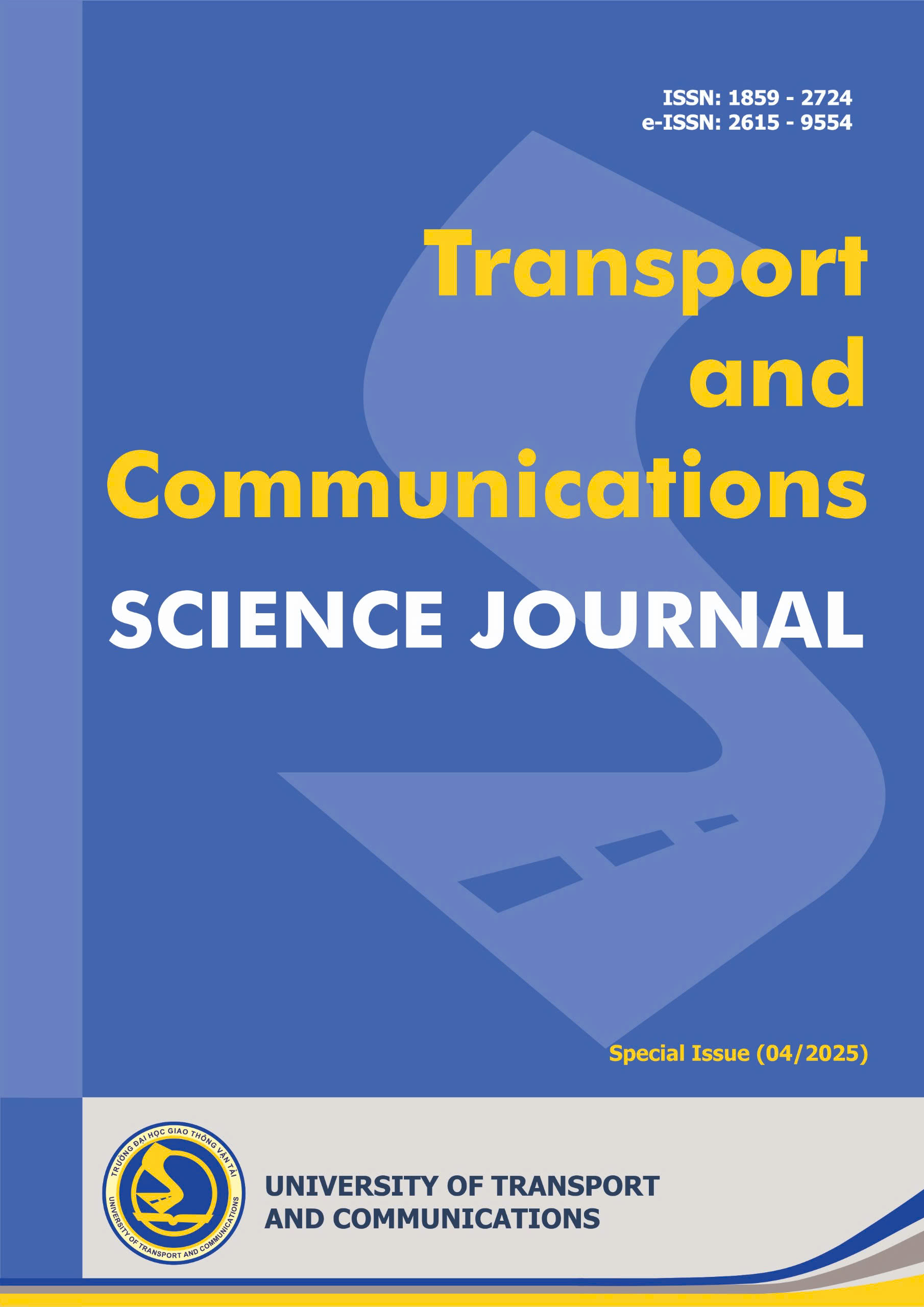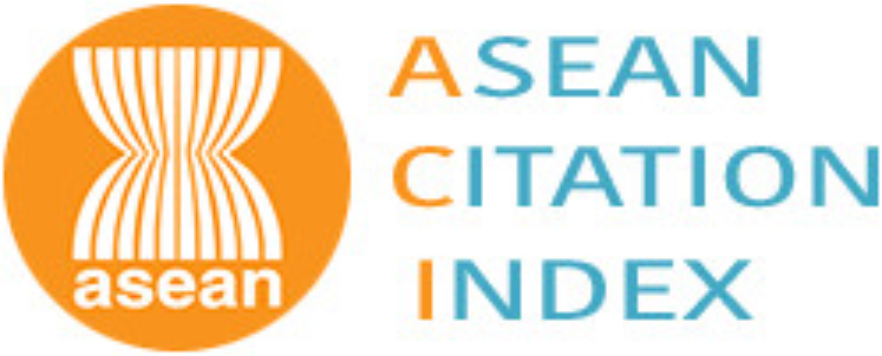Overview of advances and practices in high-speed railway earth structures in China
Email:
nguyenchaulan@utc.edu.vn
Từ khóa:
high-speed railway, transition zones, subgrade deformation, settlement control, earth structure
Tóm tắt
High-speed railway (HSR) subgrade design and construction technology have advanced significantly in the past decade. This paper outlines these developments in railway earth structures in China, including HSR design principles, subgrade fill classification, subgrade deformation mechanisms, settlement control methods, transition zones, retaining structures, and deformation monitoring analysis and remediation. We present a conceptual framework for design and examine how factors such as track types and operation speeds influence the dynamic response of the subgrade. Furthermore, we discuss prediction methodologies, influential factors, and challenges associated with long-term subgrade deformation. The load transmission mechanisms and application scenarios are evaluated for foundation treatment methods such as geosynthetic-reinforced pile-supported embankment (GRPS) and pile-raft construction. Several retaining structures have been reviewed, including cantilever, geosynthetic reinforced soil, and anchored wall. Finally, innovative construction technologies for subgrade survey, design, construction, detection, and management are introducedTài liệu tham khảo
[1]. Y. Ye, D. Cai, Q. Zhang, S. Wei, H. Yan, L. Geng, Current situation and development trend of design methods for subgrade structure of high speed railways, Railway Sciences, 2 (2023) 289-309, .
[2]. K. Liu, Y. Pei, P. Zhou, B. Liu, Y. Chen, T. Wang, Numerical methods of hydro-dynamic coupling in saturated soil and its application to railway engineering, 22 (2024) 27-47.
[3]. Y. Pei, Modelling the dynamics of ballastless railway tracks on unsaturated subgrade, Applied Mathematical Modelling, 138 (2025) 115801.
[4]. N. T. T. Dung, World experience in construction, technology transfer and operation of high-speed railway systems, lessons for Vietnam, Journal of Construction, 12 (2023) 174-179, .
[5]. T. Wang, Q. Luo, J. Liu, G. Liu, H. Xie, Method for slab track substructure design at a speed of 400 km/h, Transportation Geotechnics, 24 (2020).
[6]. X. Liu, Recent advances in subgrade engineering for high-speed railway, Intelligent Transportation Infrastructure, 2 (2023).
[7]. S. Zhou, B. Wang, Y. Shan, Review of research on high-speed railway subgrade settlement in soft soil area, Railway Engineering Science, 28 (2020) 129-145, .
[8]. Chen Yun-min, Cao Wei-ping, A. C. Ren-peng, An experimental investigation of soil arching within basal reinforced and unreinforced piles embankments, Geotextiles and Geomembranes, 26 (2008)164–174, .
[9]. X. Chen, X. Cai, W. Zha, Y. Zhou, L. Gong, Engineering characteristics test on pile–net composite foundation in loess areas,175 (2022) 3-14.https://doi.org/10.1680/jgeen.20.00042
[10]. L.-l. Gu, G.-l. Ye, X.-h. Bao, F. Zhang, Mechanical behaviour of piled-raft foundations subjected to high-speed train loading, Soils and Foundations, 56 (2016) 1035-1054.
[11]. K. Liu, B. Li, Y. Li, M. H. El Naggar, T. Wang, R. Qiu, Cyclic response of floating geosynthetic-encased steel slag columns in soft clay, Journal of Rock Mechanics and Geotechnical Engineering, 2024.
[12]. Code of practice for strengthened/reinforced soils and other fills, ISBN 978-0-580-53842-1, 2010.
[13]. Q. Huang, Y. Wu, S. Huang, G. Chen, S. Zhang, F. Zhang, Numerical tests on dynamic response of embankment with pile-supported foundation for high-speed railway in soft ground using soil–water coupling elastoplastic FEM, Scientific Reports, 15 (2025) 5651.
[14]. P. Lyu, Q. Luo, T. Wang, D. P. Connolly, Railway gravity retaining wall design using the flower pollination algorithm, Transportation Geotechnics, 42 (2023).
[15]. P. Lyu, Q. Luo, T. Wang, K. Liu, The Role of Retaining Walls in Trackbed Deflection—A Numerical Analysis of Railway Slab Tracks, in Proceedings of the 5th International Conference on Transportation Geotechnics (ICTG) 2024, 8 (2025) 343-353.
[2]. K. Liu, Y. Pei, P. Zhou, B. Liu, Y. Chen, T. Wang, Numerical methods of hydro-dynamic coupling in saturated soil and its application to railway engineering, 22 (2024) 27-47.
[3]. Y. Pei, Modelling the dynamics of ballastless railway tracks on unsaturated subgrade, Applied Mathematical Modelling, 138 (2025) 115801.
[4]. N. T. T. Dung, World experience in construction, technology transfer and operation of high-speed railway systems, lessons for Vietnam, Journal of Construction, 12 (2023) 174-179, .
[5]. T. Wang, Q. Luo, J. Liu, G. Liu, H. Xie, Method for slab track substructure design at a speed of 400 km/h, Transportation Geotechnics, 24 (2020).
[6]. X. Liu, Recent advances in subgrade engineering for high-speed railway, Intelligent Transportation Infrastructure, 2 (2023).
[7]. S. Zhou, B. Wang, Y. Shan, Review of research on high-speed railway subgrade settlement in soft soil area, Railway Engineering Science, 28 (2020) 129-145, .
[8]. Chen Yun-min, Cao Wei-ping, A. C. Ren-peng, An experimental investigation of soil arching within basal reinforced and unreinforced piles embankments, Geotextiles and Geomembranes, 26 (2008)164–174, .
[9]. X. Chen, X. Cai, W. Zha, Y. Zhou, L. Gong, Engineering characteristics test on pile–net composite foundation in loess areas,175 (2022) 3-14.https://doi.org/10.1680/jgeen.20.00042
[10]. L.-l. Gu, G.-l. Ye, X.-h. Bao, F. Zhang, Mechanical behaviour of piled-raft foundations subjected to high-speed train loading, Soils and Foundations, 56 (2016) 1035-1054.
[11]. K. Liu, B. Li, Y. Li, M. H. El Naggar, T. Wang, R. Qiu, Cyclic response of floating geosynthetic-encased steel slag columns in soft clay, Journal of Rock Mechanics and Geotechnical Engineering, 2024.
[12]. Code of practice for strengthened/reinforced soils and other fills, ISBN 978-0-580-53842-1, 2010.
[13]. Q. Huang, Y. Wu, S. Huang, G. Chen, S. Zhang, F. Zhang, Numerical tests on dynamic response of embankment with pile-supported foundation for high-speed railway in soft ground using soil–water coupling elastoplastic FEM, Scientific Reports, 15 (2025) 5651.
[14]. P. Lyu, Q. Luo, T. Wang, D. P. Connolly, Railway gravity retaining wall design using the flower pollination algorithm, Transportation Geotechnics, 42 (2023).
[15]. P. Lyu, Q. Luo, T. Wang, K. Liu, The Role of Retaining Walls in Trackbed Deflection—A Numerical Analysis of Railway Slab Tracks, in Proceedings of the 5th International Conference on Transportation Geotechnics (ICTG) 2024, 8 (2025) 343-353.
Tải xuống
Chưa có dữ liệu thống kê

Nhận bài
02/03/2025
Nhận bài sửa
23/04/2025
Chấp nhận đăng
28/04/2025
Xuất bản
30/04/2025
Chuyên mục
Thông tin khoa học và trao đổi học thuật
Kiểu trích dẫn
Tengfei, W., Nguyen Chau, L., & Bui Tien, T. (1745946000). Overview of advances and practices in high-speed railway earth structures in China. Tạp Chí Khoa Học Giao Thông Vận Tải, 76(2025), 405-419. https://doi.org/10.47869/tcsj.76.2025.4
Số lần xem tóm tắt
110
Số lần xem bài báo
121









